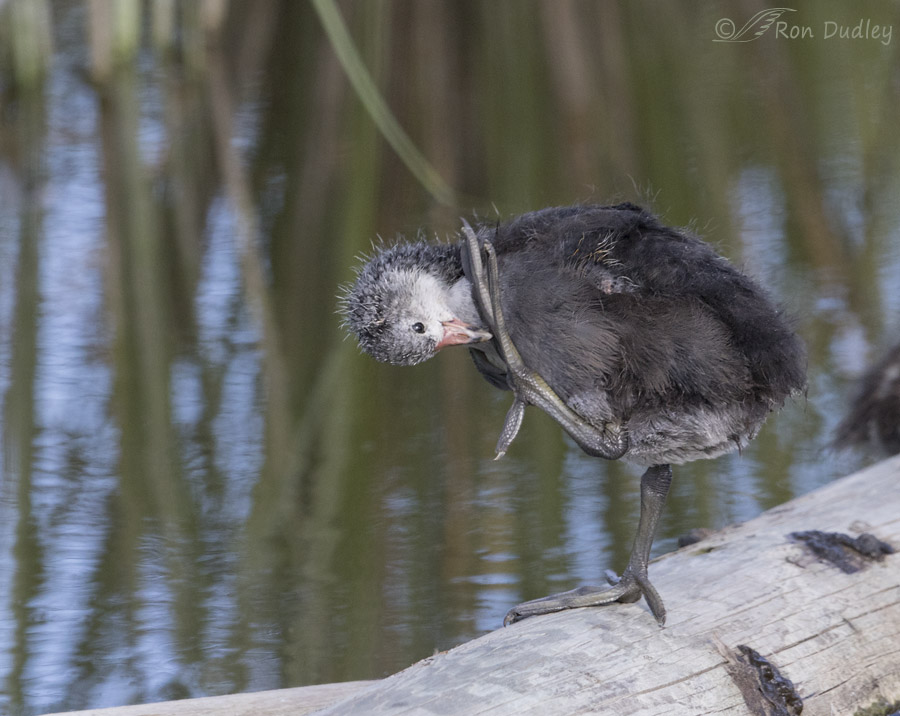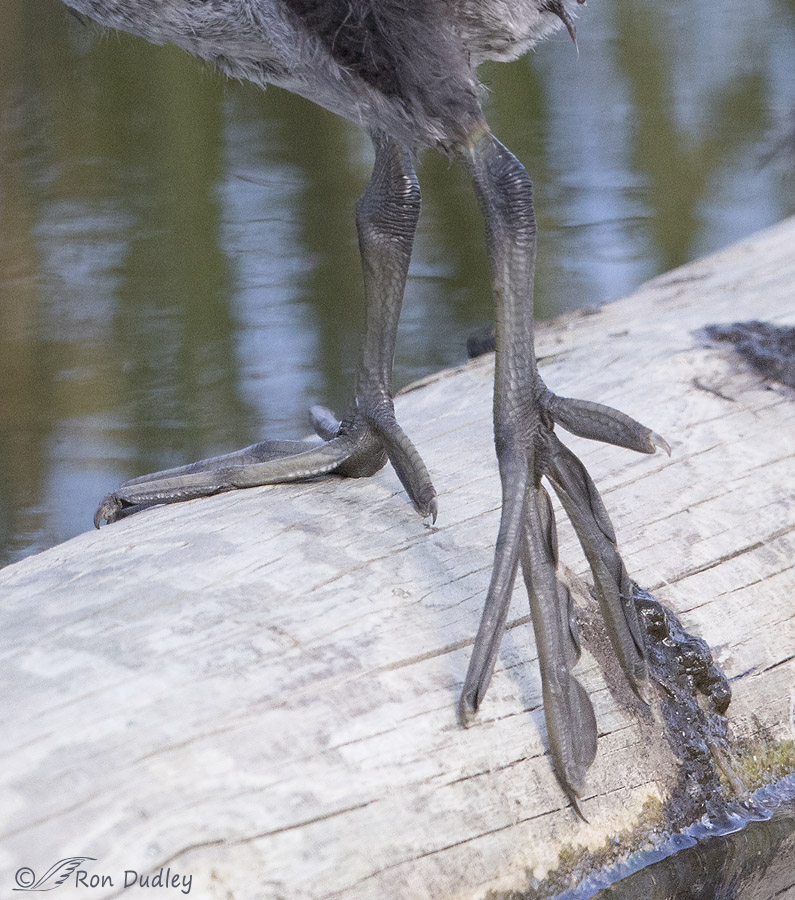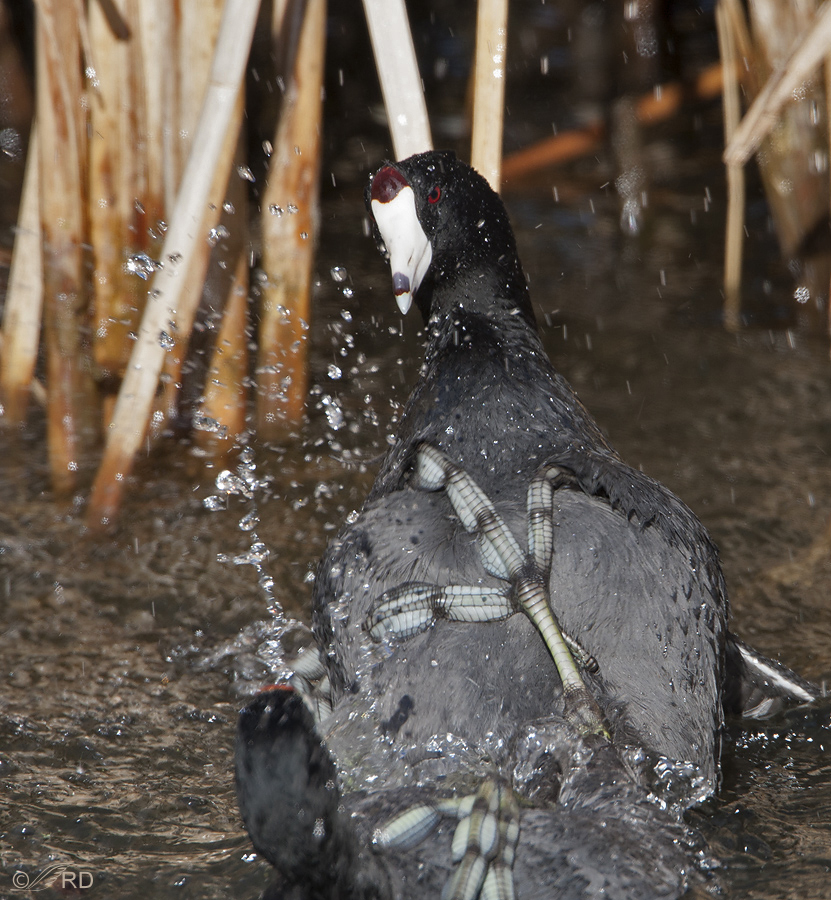It must be awkward at times to have feet large enough to wrap several times around your own head. That’s what came to mind the first time I saw this image.

1/1600, f/6.3, ISO 1600, Canon 7D Mark II, Canon EF500mm f/4L IS II USM, not baited, set up or called in
I photographed this young American Coot eleven days ago at Red Rock Lakes NWR in southwest Montana as it fastidiously cleaned its left foot. It spent almost a minute doing so but never did attend to the other foot. I thought it was an effective pose to emphasize the size if that incredible foot.
Coots are not ducks. They may look like a duck, swim like a duck and dive like a duck but they are rails, not ducks. They definitely don’t quack like a duck and their chicken-like bill is very different from that of a duck. They’re more closely related to cranes than they are to ducks but in some ways they’re quite unique – including their feet.

This is a heavily cropped image of the same bird doing a leg stretch. The toes of coots are not webbed like those of ducks. Instead their toes have distinctive lateral lobes that are indented at each toe segment. Some of the lobes can be clearly seen here on the right side of the longest toe (on the others they’re folded over the toe and not seen well in this image).
One advantage of lobed feet over webbed feet is the ability to run. Many ducks generally don’t even try to run, partly because webbed feet would make doing so more difficult. Coots are very good runners and in fact they run across the surface of the water in order to take off. Webbed feet would hinder that ability.

Coots also fight with their feet. If their feet were webbed they would make less effective weapons.
I realize that there’s not much new here for many readers but so many folks mistakenly refer to coots as ducks that I thought a clarifying post was in order.
Ron


Most informative on the feet. They sure are quite the fighters and not at all boring to watch.
Wonderful shots Ron! Interesting info as well. I can empathize with them. I have big feet to and they can be difficult to deal with. LOL
Charlotte
Love this look at avian BigFoot.
Education, and delight.
Many thanks for this post!! I, for one, did not know that coots are not ducks. Great images and explanations.
Then you learned something and that makes my day, Jane. Thank you.
Very interesting post. I am happy to say that I’ve always just thought of Coots as Coots… The first time I had the opportunity to really see their feet was at the San Diego Wild Animal Park, and I fell in love with them. It’s nice to learn about what those feet do for them.
The first time I had the opportunity to really see their feet was at the San Diego Wild Animal Park, and I fell in love with them. It’s nice to learn about what those feet do for them.
“It’s nice to learn about what those feet do for them.”
Good, I’m glad you appreciated the info, Susan.
Great shots Ron! Thanks for showing the feet. One of the things I enjoy about your blog are the photographs of parts of the bird that one usually doesn’t notice, or if they do they might pass over it. Your blog is an education unto itself!
Thanks very much, Dick. I suspect you already knew most or all of this about coots but your comment about education is very much appreciated.
Good morning, Ron (although I threw my back out yesterday so it’s not as good as it could be-lol!!!) I never knew what coot were until I discovered the Berry College Eagle nest. Coot was their main source of food during the winter months when the fish went deeper in the waters. Enjoyed your series this morning – their feet are very interesting. I think it was on a PBS special where I saw them using their feet to almost run on the water to escape a predator!! I think I mentioned before on one of your posts that the Berry Eagle Mom treats the coot feet like a delicacy & won’t share them with Dad or her eaglets!!!
Sounds like you’re learning a lot as you follow those eagles, Jo Ann. Interesting that the female is so enamored with coot feet.